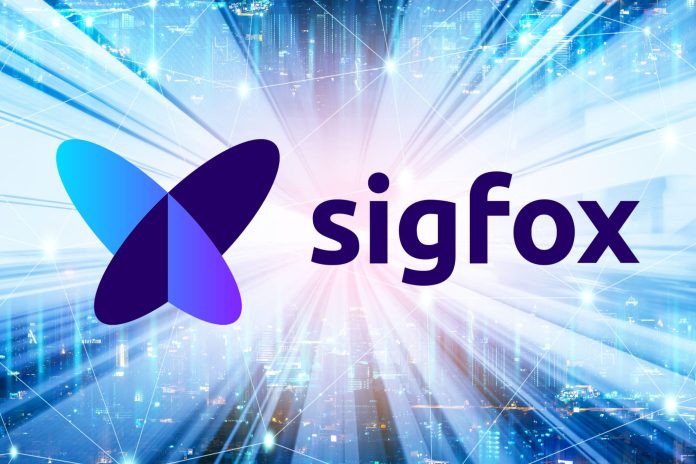Sigfox appears to have made good on its promise to hit the magic dollar mark for asset tracking devices, and to shore up its position in the fragmented IoT networking space as the sector searches for ‘massive’ global scale. The France-based narrowband IoT networking firm, which claims 16.3 million connections on its networks, says it is working with two chipset makers on dollar-priced IoT devices for tracking low-value high-volume assets.
The products will shift the needle on IoT connectivity, and asset tracking in particular, it reckons. Latest forecasts say the sector is about to ‘break big’, with shipments of trackers to jump by more than 50 percent annually through 2024, driven by growth in low-power wide-area (LPWA) networks and smaller, cheaper IoT devices. Sigfox has ja stated target of a billion connections in about the same 2025 time-frame, and sees ultra low-cost tracking as the way to get there.
A year ago, the company distributed $1 ‘button’ prototypes to 1,500 attendees at its annual Sigfox Connect event in Singapore. Originally presented as panic buttons on keychains, capable of sending alerts via the Sigfox network in case of emergency, the product has since been developed and commercialised. China-based semiconductor firm CMOSTEK Microelectronics is offering tracking modules based on the same technology.

The CMOSTEK device is geared towards pallet tracking in the supply chain, and in the postal market, notably; Sigfox has contracts for tracking roll containers with the likes of DHL in Germany, Posti in Finland, and An Post in Ireland. A second unnamed chipset vendor is launching a tracking device later this month, at this year’s (virtual) Sigfox Connect event. The new product will be available for $1-$1.50, says Sigfox, in both disposable and reusable formats.
Besides, both companies are using the ultra-cheap sensor platform to offer tracking and security in the supply chain, crossing into door and venue access controls, as well. Without revealing client use cases, Sigfox said the units will be attached to vehicle parts and also into consumer and enterprise electronics to protect against tampering and counterfeiting. The electronics sector, in particular, will bring massive volumes, it said.
To illustrate, Sigfox suggested dollar-range trackers might be fixed into laptop batteries or ink cartridges in OEM products to guard against tampering with original parts in distribution channels. It said it is engaged with one electronics manufacturer, selling unconfirmed electronics devices with swappable parts, that wants 20-30 million cheap tracking devices per year to police the supply chain for counterfeit parts.
Ajay Rane, vice president for global business development at Sigfox, told Enterprise IoT Insights: “We have made significant progress. These chipset vendors have made interesting modifications to the original button in order to save cost, and they are coming in at these price-points – not $2, and not 99 cents, but somewhere between… Which is the right price for [protecting against] tamper events, for example. You don’t need super fancy trackers for that.”
He added: “In certain markets, these replaceable parts are being swapped for fake parts. These companies want a solution to protect against that, for $1-$2. Because that replaceable unit is worth $10 or $20, and they are liable every time a fake part finds its way into their devices. If it doesn’t work, or doesn’t last, they get complaints – and every call is pricier than the original part, and damages their brand and reputation, as well.”
The counterfeiting example describes how Sigfox – as well as the IoT industry at large, including its cellular-based LPWA rivals, captured alongside in market forecasts – rationalises such mind-boggling volume targets. Rane said: “We have these numbers – 16.3 million devices, 72 countries, 41.1 million messages per day. But it doesn’t really reflect where we want to go – which is to get to tens of millions and even billions of devices.”
The incoming dollar-range trackers make certain modifications to bring the price lower. Most dispense with a radio receiver, altogether, leaving them as transmit-only ‘uni-directional’ units. “They can send a message to the network, but cannot receive one back. That takes away a significant chunk of the complexity, and also the battery life radically improves.”
In some cases – where network coverage is strong, or can be densified to be made strong – radio transmissions can go “several decibels” lower and the front-end power amplifier can be ejected as well. Rane said: “A warehouse, say, is a controlled environment, and you don’t need to transmit at the full limit for tracking inventory on site. You can reduce the cost further by removing the amplifier – the bill-of-materials will reduce by half.”
Sigfox said the new low-cost tracking devices will last about three years in the case of pallets, to match shelf-life of the pallets themselves, and weeks or months in certain ultra-budget cases, with power to issue “hundreds of messages” until the battery dies. Both disposable single-usage versions and reusable versions with replaceable batteries will be available, it said.
Sigfox said it is developing a recycling scheme – “like with glass bottles schemes for milk or cola” – to counter e-waste. Rane commented: “Just because they are a buck each doesn’t mean we can throw them away, and make them disposable. We are very concerned about e-waste, and the green impact. We are trying to come up with new ways to recycle and reuse them.”
Last month, Sigfox sold its network in Germany to Sigfox operator Heliot Europe, which has been acquired as part of the same deal by Luxembourg-based venture capital firm Cube Infrastructure Managers. No fee has been mentioned.
The arrangement puts Cube Infrastructure Managers, via its purchase of Heliot Europe, in majority charge of Sigfox operations in Austria, Switzerland and Liechtenstein, as well as the Sigfox network in Germany. Sigfox said the sale leaves it to finance new innovation to improve data management, reduce energy consumption, and lower costs.
Prior to the deal, Sigfox had owned and managed Sigfox networks in France, Germany, Spain, and the US; Sigfox-branded networks in other markets have been managed by licensed operators. Sigfox has deployed networks in 72 countries and regions.

